Address
Energy Incentives, INC
3517 W. Canal Dr.
Kennewick, WA. 99336
Work Hours
Monday to Friday: 7AM - 7PM
Weekend: Day off
In today’s world, energy efficiency isn’t just a buzzword—it’s a must, especially for large-scale projects like commercial buildings, multi-family complexes, and other large structures. At Energy Incentives, Inc., we’re focused solely on the unique demands of these big projects. We know that efficient energy use is crucial to the success and sustainability of every commercial building. Optimizing energy consumption isn’t just an option; it’s a necessity for long-term success. By prioritizing top-tier energy performance, you’ll not only cut down on operational costs but also make a significant impact on your building’s environmental footprint—a key factor in modern commercial architecture and construction.
Led by Lori Sanders, a certified Energy Star Rater and Level II Thermographer, our team boasts top-tier certifications, including ABAA, RESNET HERS Rater, LEED Green Rater, and Energy Star Multifamily New Construction.
We have earned the Energy Star Partner of the Year award in 2017 and 2018, demonstrating our commitment to delivering high-quality, energy-efficient solutions.
Our team continuously updates their skills with certifications from Green Training USA and ITC Infrared Training Center, ensuring we stay ahead in the field of energy efficiency.
Identifying and sealing air leaks can save up to 30% on energy costs, improving comfort and lowering monthly bills.
Common sources of air leaks include windows, doors, and electrical outlets; thorough inspection and simple DIY tests can help locate them.
Using techniques like caulking, weatherstripping, and conducting professional energy audits can effectively fix leaks and enhance your home’s energy efficiency.

Air leaks can account for up to 30% of your energy costs, significantly impacting your overall energy efficiency. Imagine paying extra each month simply because your home isn’t properly sealed! Addressing these leaks not only helps in saving money but also creates a more environmentally friendly home by reducing energy consumption.
Fixing air leaks can lead to considerable cost savings on your energy bills and reduce unnecessary strain on your HVAC systems. A well-sealed home ensures that your heating and cooling systems don’t have to work overtime to maintain a stable indoor temperature, enhancing your comfort. Moreover, excess air leaks can lead to moisture issues, which can result in potential mold growth, affecting indoor air quality.
Professional home energy audits provide tailored recommendations for improving energy efficiency by identifying air leaks. A comprehensive evaluation of HVAC systems during such audits ensures effective identification of inefficiencies. Proactively sealing air leaks saves money and contributes to a healthier, more sustainable environment.

Finding air leaks begins with knowing where to look. Common sources of home air leaks in a home include cracks and openings in windows and doors, floorboards, and electrical outlets. These small gaps might not seem significant individually, but collectively, they can lead to substantial air leakage.
Air leaks frequently occur around windows, doors, attic hatches, basement rim joists, and electrical outlets. Inspect areas where different building materials meet, such as corners and outdoor faucets, which are common sites for leaks. Movement in windows and doors can also indicate potential air leaks, so it’s essential to conduct the hand test to feel for drafts around various sources.
By thoroughly inspecting these areas, you can identify the most common culprits behind your home’s air leaks. This knowledge will guide you in taking the necessary steps to seal these leaks effectively, ensuring a more energy-efficient and comfortable living space.
Detecting air leaks doesn’t always require professional tools or expertise. Simple DIY techniques can be surprisingly effective. Visual inspections, the hand test, and the dollar bill test are easy methods anyone can use to identify air leaks inside their home. Let’s explore each of these techniques in detail.
The first step in finding air leaks is a thorough visual inspection. This involves looking for cracks and gaps in insulation, particularly around windows, doors, and other openings. While visual inspections can be helpful, it’s important to note that some air leaks may be hidden behind walls, ceilings, and floors, making them harder to detect.
One effective method during a visual inspection is using a flashlight or smartphone to check larger cracks. If rays of light come through gaps or cracks, it confirms a leak. Also, check areas such as knee walls, dryer vents, outdoor faucets, attic hatches, sill plates, and outer walls for any visible signs of air leaks, like darkened insulation or frosty areas.
The hand test is a simple yet effective method to feel for drafts around exterior doors, window frames, and other potential leak sources. Before starting, make sure all exterior doors and windows are closed, and any fans or sources of moving air are turned off.
Slowly move your hand around the edges of doors, windows, light switches, electrical outlets, and plumbing fixtures to conduct the hand test. If you feel air on your hand, it’s a clear indication of an air leak. Place your hand across the edges of windows, doors, air vents, and fans to check for drafts.
The dollar bill test is another simple and effective technique to determine the effectiveness of seals around windows and doors. To perform the test, close the door or window on a dollar bill.
If the dollar bill slides out easily, there’s an air leak that needs to be addressed.
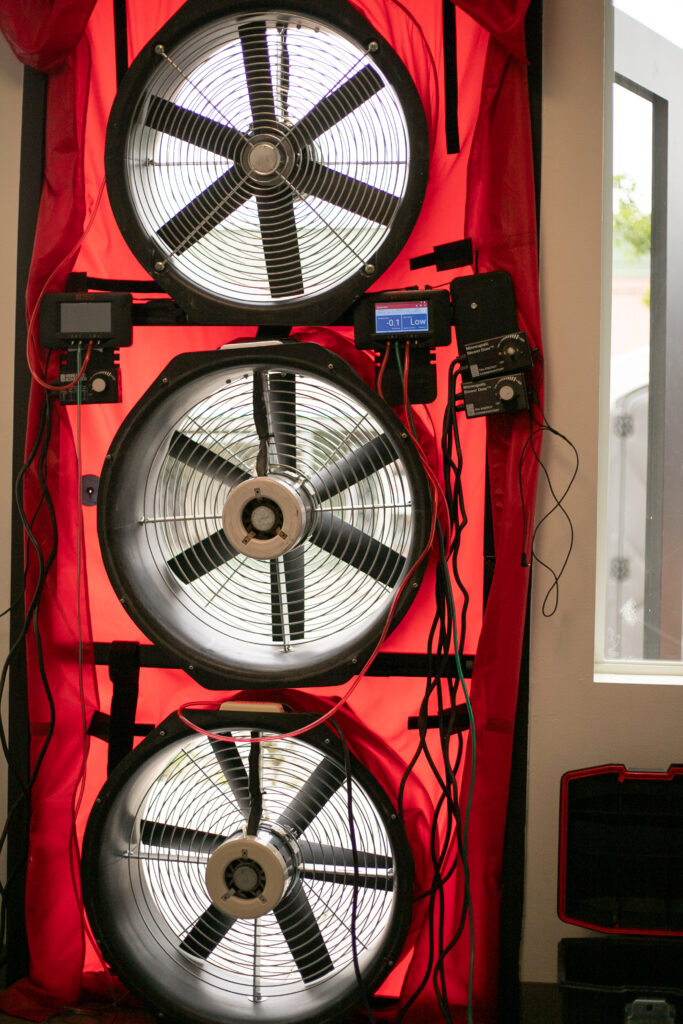
Sometimes, simple DIY techniques might not be enough to uncover all air leaks, especially those hidden behind walls or in less accessible areas. Advanced methods, such as the smoke pencil or incense stick test, building pressurization test, and using an air leak detector, can help in finding these elusive leaks.
Using a lighted incense stick or smoke pencil is an effective way to observe smoke around doors, vents, and windows for potential air leaks. As you move the incense stick around these areas, watch for any irregular smoke patterns that indicate drafts.
Focus on areas such as window frames and door seals while watching for smoke wavers, as this can reveal the presence of warm air leaks. This method is particularly useful on calm days when appliances are turned off, ensuring accurate detection.
A building pressurization test helps identify leaks by creating a pressure difference that highlights areas where air escapes. To perform this test, you will need a large window fan to increase airflow through leaks for easier detection.
After completing the pressurization test, inspect the areas where the airflow was strongest to locate potential air leaks. This method is particularly useful for identifying hidden leaks that might not be detected through simpler techniques.
Air leak detectors are specialized tools that utilize sensors to identify escaping air. They can be either ultrasonic or thermal. Ultrasonic air leak detectors detect high-frequency sounds from escaping air and can indicate whether the leaking air is cold or warm.
Thermal air leak detectors, on the other hand, detect temperature differences in the air, helping to identify leaks. These handheld devices operate by detecting temperature differences between inside and outside air, making them one of the most accurate methods for finding leaks.
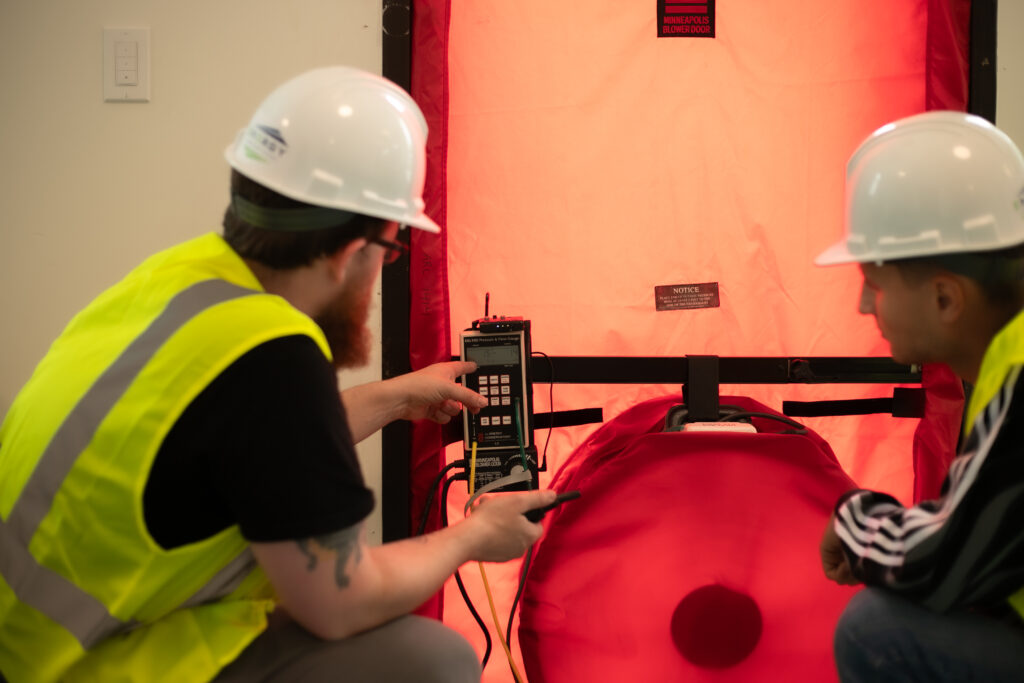
For a thorough and accurate detection of air leaks, professional testing is crucial. Methods like the blower door test and home energy audits provide a comprehensive assessment of your home’s air tightness, identifying areas that need improvement.
The blower door test is a professional method commonly used to find air leaks in homes. It involves sealing the property and using a fan to create a low-pressure wave that reveals leaks. This test evaluates a home’s airtightness, providing a detailed assessment of where air leaks may be present.
Hiring a professional for the blower door test ensures a more accurate assessment of air leaks compared to DIY methods. This comprehensive analysis can help you take targeted actions to improve your home’s energy efficiency.
A professional home energy audit identifies key areas where energy efficiency can be improved, often leading to significant cost savings on energy bills. During a home energy audit, professionals conduct a detailed assessment of your HVAC system to ensure it operates efficiently and effectively. This audit provides specific recommendations for fixing air leaks, leading to enhanced comfort and energy efficiency in your home.
By addressing these issues, you can create a more energy-efficient and comfortable living environment.

Once you’ve identified the air leaks, it’s time to fix air leaks. Using caulk and weatherstripping, insulating attic hatches and basement rim joists, and sealing electrical outlets and switches are effective methods to enhance your home’s energy efficiency.
Caulking is the most commonly used air sealing technique and is essential for improving energy efficiency. For improved air sealing around outlets, caulk or putty can be applied to gaps around the outlet cover.
Weatherstripping is another effective method to seal gaps around doors and windows. Applying weatherstripping materials prevents outside air from infiltrating your home, ensuring a more stable and comfortable indoor temperature.
Using rigid foam or fiberglass batts can effectively insulate attic hatches, minimizing heat loss and improving energy efficiency. Covering attic hatches with insulated doors or panels is another effective way to further reduce air leakage.
Basement rim joists can be insulated using rigid foam board or spray foam insulation for better air sealing. Insulating these areas is crucial as it significantly improves energy efficiency and prevents cold air entry.
Sealing electrical outlets and switches is essential to prevent outside air from infiltrating your home. Foam gaskets can be applied behind electrical outlet covers to reduce drafts significantly.
Foam gaskets block air leaks around electrical outlets and switches, improving indoor comfort by reducing drafts.
Regular maintenance is key to preventing future air leaks. Examine your chimney and fireplace flue regularly to ensure they close properly and do not allow air leakage. Check bathroom and kitchen exhaust fans for proper operation and seal any potential leaks around their installations.
Ensure dryer vents are properly installed and sealed to prevent air from escaping through improperly connected ducts. Regularly inspect your home for gaps and cracks at common leakage points like dryer vents and attic hatches to maintain an airtight space.
Additionally, regularly caulk and weatherstrip doors and windows to prevent air leakage. Insulating attic hatches and basement rim joists can also improve energy efficiency by reducing cold air entry. Finally, regularly check and clean the filters in your heating and cooling systems to prevent blockages that can lead to air leaks.
Identifying and addressing air leaks in your home is crucial for maintaining energy efficiency, reducing costs, and ensuring a comfortable living environment. From simple DIY techniques like visual inspections, hand tests, and dollar bill tests to advanced methods like smoke pencil tests and building pressurization tests, there are numerous ways to detect air leaks. Professional testing, such as blower door tests and home energy audits, provides comprehensive assessments and specific recommendations for improving your home’s air tightness.
Taking the necessary steps to fix air leaks, such as caulking, weatherstripping, and insulating attic hatches and basement rim joists, can significantly enhance your home’s energy efficiency. Regular maintenance and inspections will help prevent future air leaks, ensuring your home remains a haven of comfort and efficiency. By following these guidelines, you can enjoy a cozier, more sustainable living space while saving on energy costs.
Most air leakage in homes occurs in the attic and basement, which can lead to uncomfortable temperatures and higher energy bills. Sealing these areas can create a more efficient and cozy living space!
If you’re noticing drafts, uneven temperatures, or higher energy bills, it’s time to inspect for air leaks! Check for visible gaps around windows, doors, and other openings to enhance your home’s comfort and efficiency.
You can easily perform a basic air leak test at home by using simple methods like visual inspections, the hand test, or the dollar bill test. By checking your windows and doors this way, you can effectively identify and seal any leaks to improve your home’s energy efficiency!
A blower door test is essential for improving your home’s energy efficiency, as it identifies air leaks and assesses air tightness. By addressing these issues, you can enhance comfort and save on utility bills!
To effectively fix air leaks in your home, gather caulk, weatherstripping, foam gaskets, rigid foam, and fiberglass batts for insulation. With these materials, you can create a more energy-efficient space!
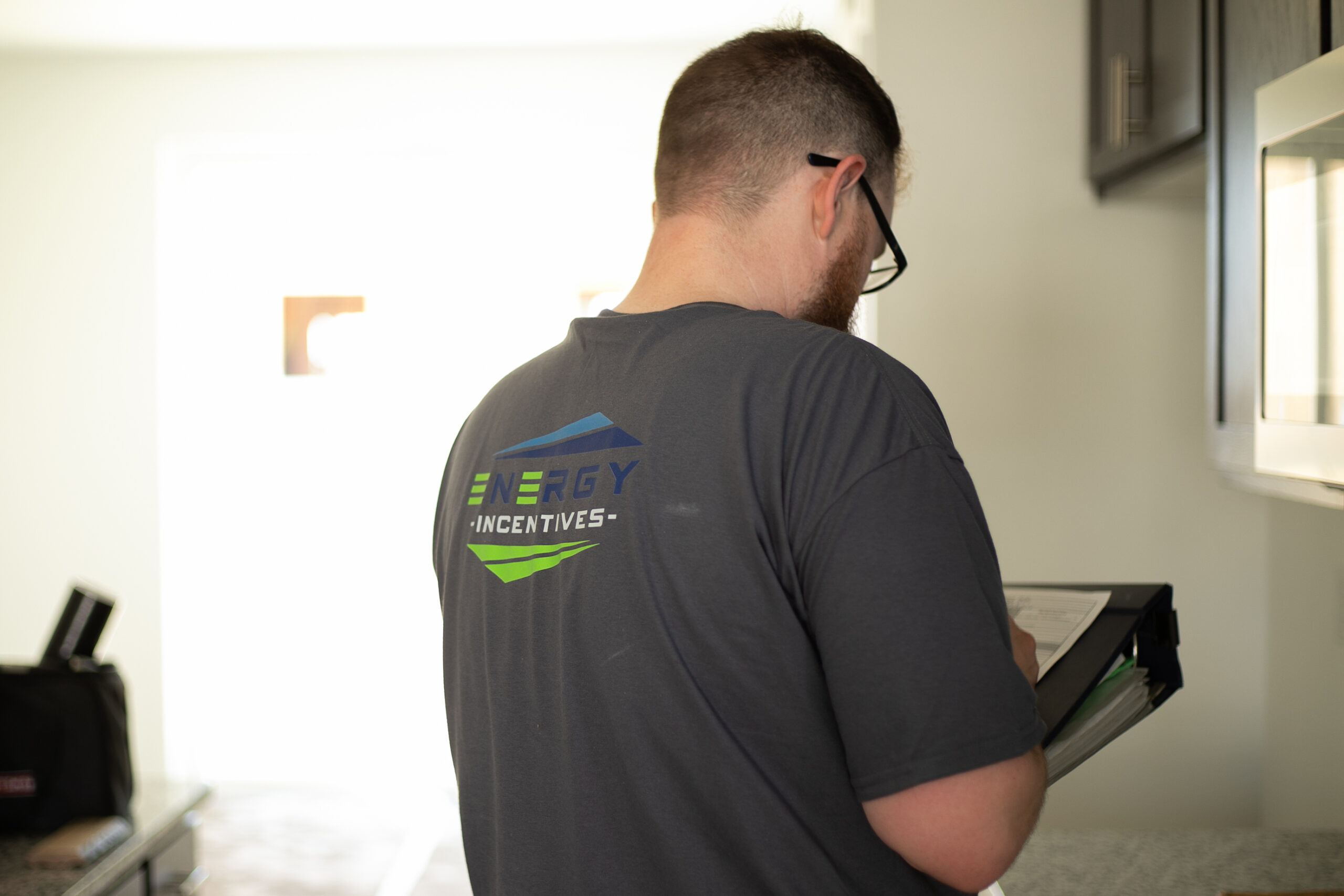

Introduction Welcome to the ultimate guide on the accuracy of commercial air leakage tests! As the owner and lead consultant for Energy Incentives, INC., I, Lori Sanders, am here to provide you with expert insights on this critical aspect of building maintenance. With advanced certifications and years of practical experience,
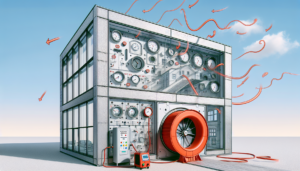
Essential Guide to Air Leakage Test for Energy Efficiency An air leakage test measures how much air escapes from a building, helping to improve energy efficiency. This guide will explain what an air leakage test is, how it works, its benefits, and when to perform it. For more information on
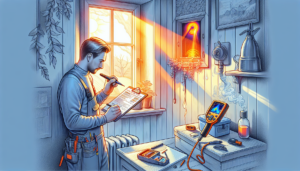
Introduction Welcome to an essential guide for all commercial building owners in Washington State! As the owner and lead consultant for Energy Incentives, INC., I, Lori Sanders, am here to share with you the top five reasons why every business should invest in a commercial air leakage test right now.
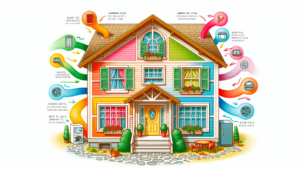
Introduction Welcome to the ultimate guide on commercial air leakage testing! As the owner and lead consultant for Energy Incentives, INC., I, Lori Sanders, am excited to share everything you need to know about this crucial aspect of maintaining your commercial building’s integrity and energy efficiency. With years of practical

